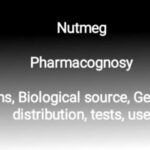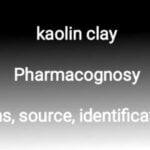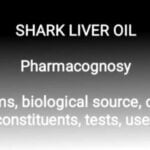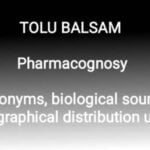Digestive system notes HAP 1st year : Unit 2 hello friends welcome here. Digestive system is a part of human body so this unit is we are going to discuss here in more detail the topics are – Digestive system, What is digestive system, Mouth function, Function of stomach, Small intestine function, Large intestine function, Function of liver, Pancreas function.
Digestive system
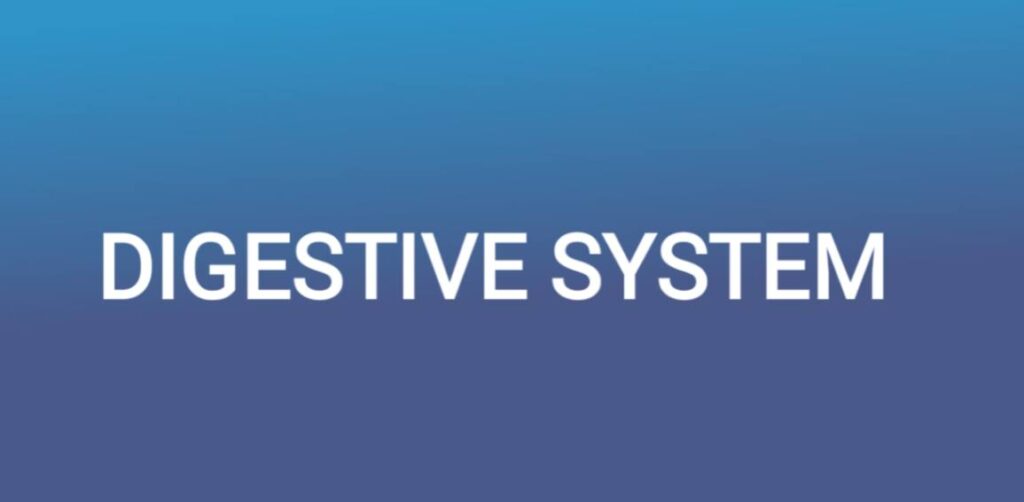
What is digestive system
The major objective of eating food is to get motrients. The conversion of complex food into simple e absorable form is known as digestion the system thol performs the process of digestion is known as digestive system. Digestive System simply breakdown the food into nutrients.
- Mouth
- Pharynx
- Salivary Glands
- Pancreas
- Oesophagus
- Liver
- Stomach
- Large Intestine
- Small Intestine
- Rectum
- Anus
Stages Of Digestion
Ingestion : Receiving of food
Propulsion : Movement of food
Digestion : Mechanical chemical breakdown
Absorbtion : Absorbtion of nutrients Removal/Excretion of food
Excretion : Removal or Excretion of food.
Human digestive system parts and functions
Parts of Digestive System
The digestive is mainly consist of Gastrointestinal Tract & Digestive Glands also known as Accessory Glands. The major organs of GIT includes:
(1) Mouth
(2) Pharynx
(3) Oesophagus
(4) Stomach
(s) Small Intestine
(6) Large Intestine
(3) Rectum
(8) Anus
Mouth function in digestive system
Mouth
The mouth mainly consist of lips, cheeks, gum, teeth, salivary glands and Tongue.The space blw gums & cheeks is known as Vestibule.The roof baccal cavity is known as Palate. Palate are of two types: soft Palate andHard Palate.
Teeth
Teeth mainly perform mechanical digestion, They breakdown the food into smaller pieces.There are total 32 teeth in mouth
Incisors: 8
Canines:4
Premolors: 8
Molars: 12
Tongue
It is attached with Hyoid bone .It mixes saliva into food convert into bolus
Receptors: Sweet,Salty,To Sour,Bitter
For more such important material Follow our group link
OESOPHAGUS
It lies between trachea infront vertebral column of back. No digestion takes place in Oesophagus as digestive enzymes are absent. Oesophagus opens into stomach
STOMACH
It is a shaped pouched like structure.
I lies in the left side of abdominal cavity.
Capacity 30 ml-1.5 Litre. 1 secretes digestive fluids called Gastric Juice.
I se receives food from oesophagus. It secretes gastric juice into bolus e convert into Chyme.
Wall of Stomach
The wall of stomach is made of 4 layers:
Serosa
Masculans
Submucosa
Mucosa
Parts of Stomach
It can be divided into 4 parts
Cardiac
Findus
Body
Cardiac
Fundus
Pylorus
Body
Cardiac
It is the uppermost pout of stomach. I is attached with lower end of oesophagus.
It contains Cardiac spinchles It prevents backflow of food from stomach to
Oesophagus otherwise it can cause heartburn
Fundus
It is also the upper part of stomach. Fundus contains special types of cells known as
Chief cells Parietal cells.
CHIEF CELLS: 1 produxes various enzymes includes-
Pepsin Renin
• PARIETAL CELLS: It mainly produces HCI
Lipase
I is the largest part of stomach I digest protein stores food until it reaches
into small intestine
• It contains special types of cells known as G-CEUs.
G Cells Secretes Gastrin Harmone.
NOTE: In the complete epithelium of stomach there are so many goblet cells are present that secretes mucous < it protects stomach from HCI.
Role of Gastric HCL
The HCI (Hydrochloric acid) plays major role in digestion of food
in the stomach.
It helps to convert bolus into chyme.
It converts pepsinogen into pepsin that helps in protein digestion.
It also shows antiseptic action by killing bacteria.
Function of stomach in digestive system
It stores the food for a long time after that transferred into small intestine slowly. and digestion absorbtion of food in small intestine.
Storage Time:
(i) Fat : 6-8 hours
(ii) Proteins 4-5 hours
(iii) Carbohydrates 1-2 hours
Gastric juice mainly helps in the digestion of protein. It secretes mucous that protects the stomach from HCI. It kills bacteria other dust particles from food.
Small intestine function in digestive system
SMALL INTESTINE
It is a long narrow tube whose upper part is attached to stomach while lower part is attached with large intestine.It is about 6-7 meter long. It is the site of major absorbtion digestion divided into three parts: Duodenum, Jejunum,Ieum.
Duodenum:
Duodenum accepts only Alkaline food. It is approx 10-11 inches long. It receives bike juice, pancreatic juice & food from liver, pancreas. Secretions of Duodenum:
(i) Enterogastrone
(ii) Secretin
(iii) funcrecenzyme
(iv) Cholecystokhin
Jejunum
• It is about 4-8 feet long.It is the major site for absorbtion of sugars, amino acids.It secretes intestinal juice.Final breakdown of food completed here.
ILEUM
It is last part of small intestine connected with the cecum ( port of large intestine).It is about 10 11 feet long. It is the major site of absorbtion of nutrients, bike, vitamies etc.
Enzymes Responsible for Digestion
Enterokinase : Converts trypsinogen into trypsin
Sucrose, Maltase & lactase : Converts disaccharides into monosacharides.
Large intestine function in digestive system
LARGE INTESTINE
- It starts from ileum & ends on rectum.
- It is approx 1.5 m long.
- parts: Cecum, Ascending colon, Descending Colon, Transverse Colon, Sigmoid Colon
RECTUM
It stores the remaining waste of Food.The undigested or unabsorbed substances that is stored in the Gnts are called Forces.
ANUS
The undigested and unabsorbed food that is simply known as Faeces excreted out from body through anuse it is a Voluntary process. Two types of spinchler muscles found in anus.Internal: Involuntary and External Voluntary
DIGESTIVE GLANDS
Digestive glands are the accessory glands of digestive system that helps in the process of digestion.They mainly includes: Salivary Glands,Liver, Gall Bladder, Pancreas
SALIVARY GLANDS
Salivary glands are the exocrine glands present in the mouth thot secretes saliva in GITSaliva mixes with food & convert it into Bolus.Human salivary glands produces 0.5 L to 1.5 L saliva daily. Saliva contains digestive enzymes mainly Salivary AmylaseIt also have antibacterial effect of fighting of bacteria.Saliva contains 99.5 7. water e 0·6%. proteints & mineral salts.
Types of salivary glands
There are mainly 3 types of salivary glands present in humors:
- Parotic Glands
- Submandibular Glands
- Sublingual Glands.
LIVER
Liver is the largest gland or largest organ of our body. Its weight is about 1.5 kg.It has highest regeneration power .
Function of liver in digestive system
Liver performs maximum number of functions in our body.It is reddish brown colour in human Surfaces of Liver.Liver have four surfaces: Superior Surface, Inferior Surface, Anterior Surface, Posterior Surface.
Lobes of Liver
Liver contains two lobes:
Right Lobe
Left Lobe
Right lobe forms 5/6 part while left lobe forms 1/6th part.Right Left lobes are separated by Faldiform Ligaments. Right duct anses from night lobe left duct arises from left lobe of liver. Both right left ducts combines & form a common hepatic duct
Internal Structure of Liver
The liver is made up of small hexagonal units present in large number in liver. Each lobule has a central vein or intratobular vein surrounded by several portal Triads.The portal triad is consist of : Portal Vein , Bile duct, Hepatic Artery
Functions of Liver
- Secretion of bile juice
- Portal Triad Central Vein
- Synthesis & storage of Glycogen
- Synthesis of Urea
- Metabolism of carbohydrates, fats e Proteins. Vitamins & Minerals Storage.
- Synthesis of Heparin
- Blood sugar regulation
- Detoxification & Purification of blood.
GALL BLADDER
Gall bladder lies below the right Lobe, Gall bladder contains cystic duct
Function of gallbladder in digestive system
Microvilli on gall bladder absorbs moisture from bile makes it concentratedBile Duct,Blood Sinus.
PANCREAS
It secretes both enzymes & harmones It can be divided into three parts: Head,Body,Tail.
Pancreas function in digestive system
Enzymes Secretion by Pancreas
Pancreatic Juice mainly contains:
Lipase : Converts Fate into Fatty acids & glycerols.
Amylase Converts Starch into Maltase
Trypsin Converts Peptones into Amino acids.
Harmones Secretion by Pancreas: Islets of Langatons contains mainly 3 types of celle that Secretes following hormones.
• Alpha Cells : Glucagon
Beta Cells: Insulin
• Delta Cells: Somatostatin
ACID PRODUCTION IN STOMACH
Hcl is produced by the parietal cells of stomach.Carbon di oxide is derived from metabolic activities of parietal cells. The carbon dioxide is present in parietal cells combines with H20 form carbonic acid (Hacos) in the presence of carbonicanhydrase.
• The enzyme carbonic anhydrase present in high concentration in parietal cells.
• Carbonic acid is most unstable compound hence it immediately.Splits into hydrogen ion (H) bicarbonate ion (HCOs) The hydrogen ion is actively pumped into canaliculus of parietal cells through kit Alpase pump & the energy this process is derived from glucose for Now simultaneously along with this process (4- ions also pumped into canaliculus of parietal cells.
• Chloride (ce) is derived from Nacl in blood. Now in the final step Ht combines with (1-e form HCI
ROLE OF PEPSIN IN PROTEIN DIGESTION
Pepsin is the enzyme secreted by chief cells of stomach
• It is the only proteolytic enzyme present in Gastric Juice (proteolytic enzymes are those that helps in breakdown or digestion of protein.
• The chief cells produce pepsin in the inactivated form known. as Pepsinogen.
Now this pepsinogen activates in the form of Pepsin with the help of HCI secreted by parietal cells.
• After activating in the form of pepsin it breakdowns the proteins into small.
• Although pepsin plays major role in protein digestion but Most of the protein are digested by in the duodenum dejunum of small intestine by pancreatic juice.
Also read:
Brain and spinal cord HAP notes : Unit 1 Link
Conclusion :
So friends I hope you like this article. If you find some topics I didn’t cover and they are important tell us in comment below. Thank you. Do visit next time.

